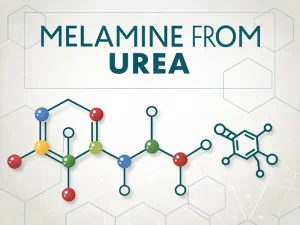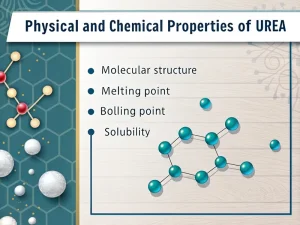
Urea VS Anhydrous Ammonia
Tech Blog urea vs anhydrous ammonia Nitrogen is the “lifeline” of crop growth, directly affecting leaf development, photosynthetic efficiency, and yield potential. For global farmers,

For anyone engaged in agriculture — from backyard gardeners to large-scale farmers — terms such as “urea” and “fertilizer” are often used interchangeably. But are they the same thing? Are they completely different?
This confusion may lead to errors in nutrition management, including the wrong product use, which can waste money, damage crops, or harm the environment.
In short, fertilizers are a broad category, and urea is a specific type of fertilizer.
Fertilizer is a general term for any substance, whether natural or synthetic, that provides essential nutrients to plants to promote growth, increase yield, or improve quality. Plants rely on 17 vital nutrients, but the three most critical ones (known as “macronutrients”) are:
Nitrogen (N) is crucial for green growth and chlorophyll production in leaves.
Phosphorus (P) is crucial for root development, flowering, and energy transfer.
Potassium (K) is crucial for overall plant health, disease resistance, and water regulation.
Fertilizers are classified based on the nutritional components they provide:
Nitrogen fertilizer: Focus on transporting nitrogen fertilizers (such as urea and ammonium nitrate).
Phosphate fertilizer: Supply phosphorus (such as superphosphate, diammonium phosphate/DAP).
Potassium fertilizer: provides potassium (such as potassium chloride, potassium sulfate).
Trace nutrient fertilizers: provide trace elements such as iron, zinc, or boron (crucial for specific crop needs).
Fertilisers can also be organic (such as manure, compost, and bone meal) or synthetic (such as urea and ammonium sulfate). Their main goal is to fill the soil’s nutrient gap and ensure plants have what they need to grow strong.
Urea is a special type of synthetic nitrogen fertilizer and one of the most widely used nitrogen fertilizers worldwide.
The prominent feature of urea is its high nitrogen content: by weight, it contains about 46% nitrogen, the highest among solid nitrogen fertilisers. Unlike some nitrogen sources, such as ammonium nitrate, urea is a neutral compound (pH ~7), noncorrosive, and easy to handle and store.
In soil, urea does not directly act on plants. On the contrary, soil bacteria (through an enzyme called urease) convert it into ammonium, which is then further converted into nitrate.
Asking the difference between urea and fertilizer is like asking the difference between a “car” and a “vehicle”. Sedans are a type of vehicle, but not all vehicles are sedans. Similarly, urea is a type of fertilizer, but not all fertilizers are urea.
Feature | Fertilizer | Urea |
Definition | A broad term for any substance that provides essential nutrients to plants. | A specific, nitrogen-rich chemical compound used as a fertilizer. |
Scope | A wide category including thousands of different products. | A single type of fertilizer. |
Nutrient Content | Variable. Can contain N, P, K, or a combination of many nutrients. | Specific and concentrated. Contains 46% Nitrogen (N) and virtually no P or K. |
N-P-K Ratio | Can be anything (e.g., 10-10-10, 5-20-5, 0-0-60). | Always 46-0-0. |
Primary Purpose | To provide whatever nutrient(s) the plant is lacking. | To provide a large, cost-effective dose of nitrogen. |
Examples | Compost, ammonium sulfate, bone meal, potassium nitrate, urea. | Urea itself. |
Three factors often lead to the misconception that “urea=fertilizer”:
Urea is the most widely used nitrogen fertilizer globally, accounting for approximately 50% of all nitrogen fertilizer sales. Its high nitrogen density, low cost, and versatility make it the preferred choice for farmers growing corn, wheat, rice, and other nitrogen-demanding crops. This universality leads many people to associate “fertilizer” with “urea” by default.
Farmers and horticultural centres often use shorthand. For example, farmers may say, ‘I need to fertilize corn,’ and they specifically refer to urea (because corn needs nitrogen the most). This casual language blurs the boundaries between categories and products.
Urea and most fertilizers are applied to soil or leaves to promote crop growth. This common purpose can easily overlook the relationship between “specific and general”, such as confusing “apple” (a specific fruit) with “fruit” (a broad category).
Understanding the difference between urea and fertilizers can help you make wiser choices. In these cases, urea is the correct choice:
Look for signs such as light-green or yellow leaves (starting at the bottom of the plant), slow growth, or reduced tillering (in grasses such as wheat). Urea delivers concentrated nitrogen gas to solve these problems (when applied correctly) quickly.
Urea contains 46% nitrogen, providing more nutrients per dollar than other nitrogen fertilizers. For example, to obtain 100 pounds of nitrogen, you need 217 pounds of urea, while ammonium nitrate (33% nitrogen) or ammonium sulfate (21% nitrogen) requires 303 pounds. Fewer materials also mean lower transportation and storage costs.
Unlike ammonium nitrate (which corrodes metal equipment) or potassium chloride (which damages concrete), urea is gentle on spreaders, storage tanks, and irrigation systems. This makes long-term use and bulk handling safer.
Urea is not a one-size-fits-all solution. Choose other fertilizers in the following situations:
Your soil is deficient in phosphorus (e.g. poor root growth): Use superphosphate or diammonium phosphate.
Your crop needs potassium (such as tomatoes that are prone to flowering and rotting): choose potassium chloride or potassium sulfate.
You are growing organic crops: Urea is synthetic, whereas organic nitrogen sources include blood powder, fish mince, or compost.
You need a balanced supply of nutrients (for example, starting a vegetable garden): choose NPK fertilizers.
The difference between urea and fertilizer is essential but straightforward: fertilizer is a broad class of nutrients, while urea is a specific type of nitrogen fertilizer.
Simply put, urea is a fertilizer, but not all fertilizers are urea. Understanding this fundamental difference can eliminate confusion, make wiser and more effective choices, and help plants thrive.

Tech Blog urea vs anhydrous ammonia Nitrogen is the “lifeline” of crop growth, directly affecting leaf development, photosynthetic efficiency, and yield potential. For global farmers,

Tech Blog melamine from urea Melamine is well-known for its wide range of applications, but its raw material for production is surprisingly urea. For manufacturers,

Tech Blog physical and chemical properties of urea Urea, with the chemical formula CO(NH2)2, is a simple organic compound that plays a central role in
Melamine: It has relatively stable chemical properties and can withstand the corrosion of some common chemical substances, such as general acids, bases, and organic solvents. However, its chemical structure may be destroyed under extreme conditions, such as strong acids, strong alkalis, or high temperature and pressure.
Polypropylene: It has good chemical stability and tolerance to most chemicals, especially organic solvents. This makes polypropylene perform well in packaging applications in chemical, pharmaceutical, and other fields.

JINGJIANG MELAMINE POWDER
© JINJIANG MELAMINE